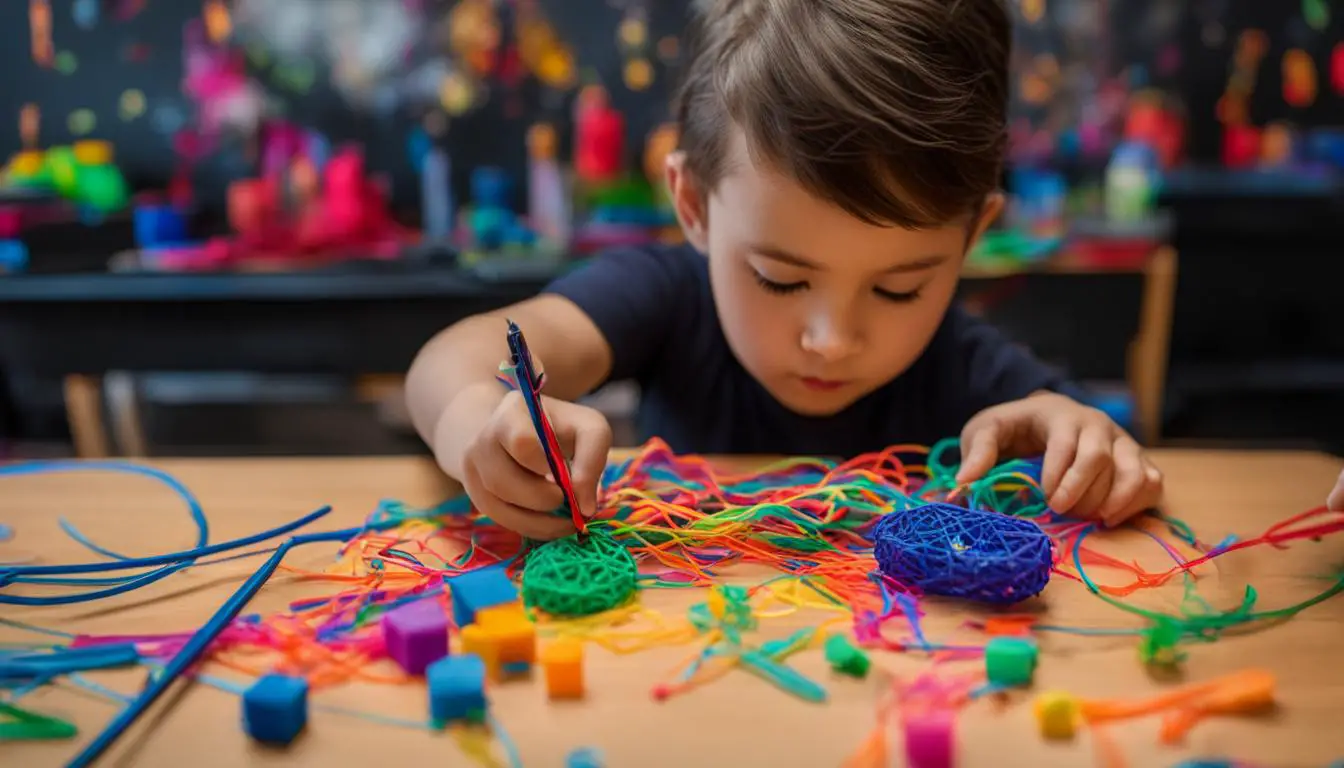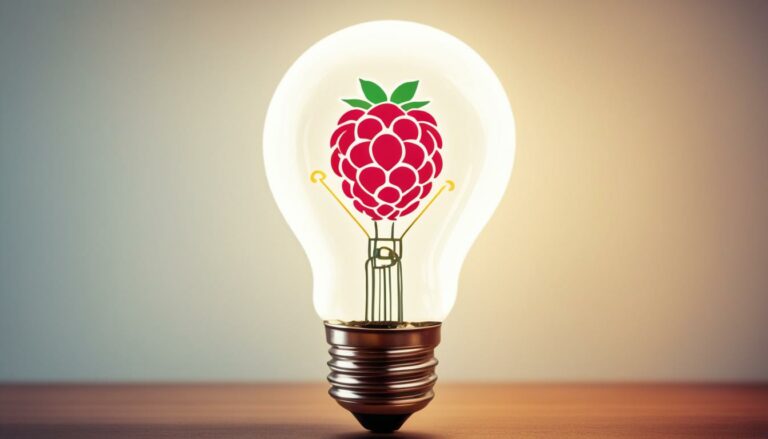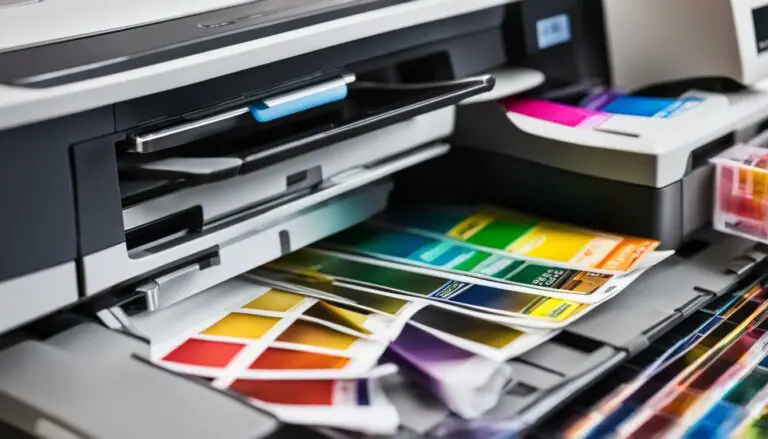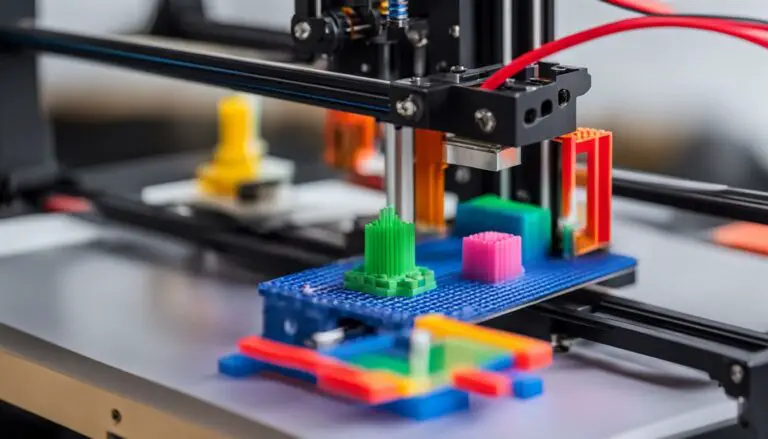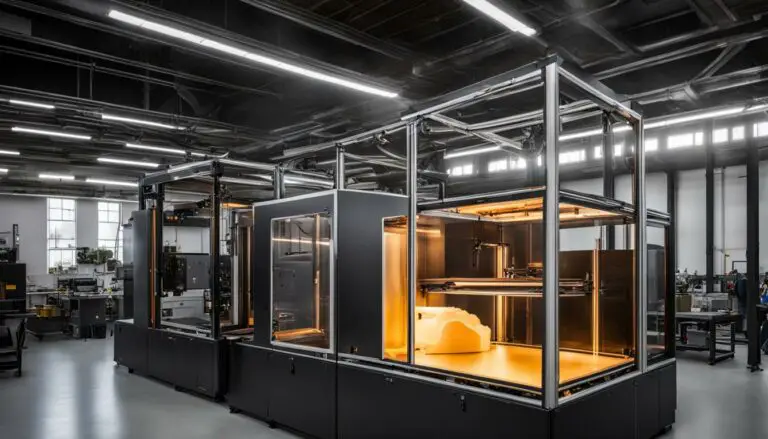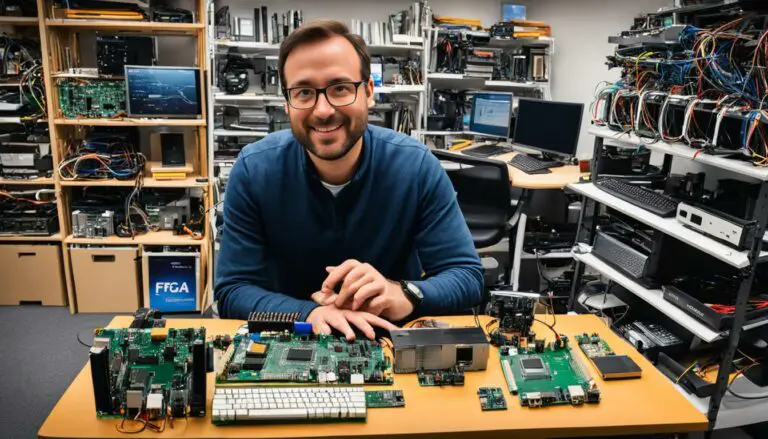How To Master 3D Pen For Kids In Easy Steps
Originally posted on December 2, 2023 @ 3:21 pm
This piece will delve into the thrilling realm of 3D pens designed specifically for children. These revolutionary gadgets empower kids to express their imagination and transform their art into three-dimensional masterpieces. With their user-friendly nature and limitless potential, 3D pens have gained widespread popularity among budding artists.
Before we dive into the details, it’s important to note that our reviews are backed by rigorous testing and research. We strive to provide unbiased insights to help you choose the best 3D pen for your child’s needs.
Key Takeaways:
- 3D pens allow children to create 3D objects and designs with ease and fun.
- There are two types of 3D pens: hot pens and cool pens, each with its own benefits and considerations.
- When choosing a 3D pen for kids, factors such as power source, tip options, and price should be taken into account.
- Proper adult supervision is crucial to ensure safe usage of 3D pens.
- With the right 3D pen, kids can have hours of fun and educational experiences while developing their artistic skills.
What is a 3D pen?
A 3D pen is a pen-shaped device that extrudes heated plastic from its nozzle to create raised plastic shapes or lines. It allows kids to draw and make models in 3D, bringing their artwork to life. The plastic quickly cools down and hardens, resulting in a solid 3D object that can be physically held and touched. There are two main types of 3D pens: hot pens and cool pens. Hot pens work similar to glue guns, using a heating element to melt the plastic filament. Cool pens, on the other hand, use ultraviolet (UV) light to harden photosensitive plastics. Both types of pens offer unique features and benefits for kids to explore their creativity.
With a 3D pen, you can turn your imagination into reality. Whether you want to create a mini sculpture, a personalized keychain, or even a small architectural model, a 3D pen makes it possible. Unlike traditional pens that only create 2D drawings on paper, a 3D pen allows you to draw in mid-air, bringing your designs to life in three dimensions. It’s like magic!
Using a 3D pen is as easy as using a regular pen or pencil. Simply hold the pen like you would hold a writing tool, and start drawing. The plastic filament flows out smoothly from the pen’s nozzle, allowing you to create precise lines and shapes. As the plastic cools down, it solidifies, allowing you to build up layers and create complex structures. Whether you’re a beginner or an experienced artist, a 3D pen is a versatile tool that offers endless possibilities for creativity.
Benefits of using a 3D pen for kids
- Enhances creativity and imagination
- Develops fine motor skills and hand-eye coordination
- Encourages problem-solving and critical thinking
- Promotes spatial awareness and understanding of 3D concepts
- Provides a hands-on learning experience
- Fosters a sense of accomplishment and pride in creating something unique
Whether your child is a budding artist, an aspiring engineer, or simply loves to explore new technologies, a 3D pen is a great tool to inspire their creativity and imagination. It offers a fun and educational way for kids to learn about design, engineering, and the world of 3D printing. So why not unleash your child’s artistic potential and let their creations come to life with a 3D pen?
| Hot 3D Pen | Cool 3D Pen |
|---|---|
| Uses a heating element to melt plastic filament | Uses ultraviolet (UV) light to harden photosensitive plastics |
| More precise control over the drawing process | Safe and suitable for younger kids |
| Requires more parental supervision | Does not require a heating element |
| Can create vertical 3D drawings | Safer for kids but may require protective eyewear |
How do 3D pens work?
3D pens are fascinating tools that bring creativity to life. But have you ever wondered how these pens actually work? Let’s delve into the inner workings of these magical devices.
When it comes to hot 3D pens, the process begins by feeding a plastic filament into the pen. Inside the pen, there’s a heating element that melts the plastic, turning it into a malleable state. As you start drawing, the softened plastic is pushed out of the nozzle and quickly cools down, solidifying into a 3D object right before your eyes. It’s like sculpting with plastic!
Cool 3D pens, on the other hand, use a different mechanism. Instead of heating the plastic, they rely on photosensitive plastics that react to ultraviolet (UV) light. The liquid photosensitive plastic flows down the pen until it reaches the tip of the nozzle, where a UV light source is located. When the plastic is exposed to the UV light, it hardens and becomes ready to be drawn with. These cool pens offer a safer option, especially for young kids, as they do not require a heating element.
| Hot 3D pens | Cool 3D pens |
|---|---|
| Use a heating element to melt plastic filaments | Utilize UV light to harden photosensitive plastics |
| Require parental supervision due to the heating element | Safer for younger kids, no heating element involved |
| Provide more precise control and faster hardening | Do not require a heating element, but may take longer to harden |
Now that you know how 3D pens work, you can choose the type that suits your preferences and needs. Whether you opt for a hot pen or a cool pen, you’ll be able to create amazing 3D designs and let your imagination run wild! Just remember to use them safely and enjoy the endless possibilities these pens offer.
Types of 3D Pens and Their Features
When it comes to 3D pens for kids, there are different types available in the market, each with its own unique features and benefits. Whether you’re looking for a traditional Fused Deposition Modeling (FDM) pen or a safer option like a UV pen, there’s a 3D pen out there to suit your child’s needs and preferences.
Traditional 3D Pens (FDM)
Traditional 3D pens, also known as Fused Deposition Modeling (FDM) pens, are the most commonly used type. These pens use a heating element to melt the plastic filament, allowing kids to create precise and detailed designs. With a wide range of temperature settings, FDM pens offer more control over the drawing process. They also come with different nozzle sizes, allowing for different line thicknesses and design possibilities.
Low-Temperature 3D Pens
If safety is a concern, low-temperature 3D pens are a great choice for kids. These pens have a lower temperature heating element, making them safer to use, especially for younger children. While they may require more effort to create intricate designs, low-temperature pens still offer a fun and creative experience for kids.
UV 3D Pens
UV 3D pens are another popular option for kids. These pens use ultraviolet (UV) light to harden photosensitive plastics, eliminating the need for a heating element. UV pens are generally considered safer for kids, as they don’t involve any hot parts or melting plastic. Some UV pens have internal UV light sources, while others have external UV chambers, giving kids the flexibility to choose the design that suits them best.
| Type of 3D Pen | Features |
|---|---|
| Traditional 3D Pens (FDM) | Heating element, precise control, different nozzle sizes |
| Low-Temperature 3D Pens | Lower temperature, safer for kids, may require more effort |
| UV 3D Pens | Ultraviolet light, safer for kids, internal or external UV sources |
When choosing a 3D pen for your child, consider their age, skill level, and personal preferences. Traditional FDM pens offer more control and precision, while low-temperature and UV pens prioritize safety. Regardless of the type of 3D pen you choose, your child will have a blast exploring their creativity and bringing their imagination to life in 3D.
Conclusion
3D pens are a fantastic tool for kids to express their creativity and delve into the world of 3D art. Whether you choose a hot pen or a cool pen, your child will have endless possibilities to design and create. Remember, it’s crucial to supervise your child while they use the 3D pen to ensure their safety.
When selecting a 3D pen, consider factors such as the power source, tip options, and price. There are many great options available that are affordable, easy-to-use, and kid-friendly. With the right 3D pen, your child can have hours of fun and educational experiences while honing their artistic skills.
At Print Chomp, we are dedicated to providing you with practical tips, how-to guides, and in-depth, unbiased reviews based on rigorous testing and research. We aim to help you make informed decisions and find the best 3D pen for your child. So go ahead, explore the world of 3D art with your kid and watch their imagination come to life!
FAQ
How do I choose the right 3D pen for my child?
When choosing a 3D pen for kids, consider factors such as the power source, tip options, and price. Battery-powered pens are more portable but need to be recharged, while corded pens offer longer usage time. Some pens allow users to switch their nozzles, which can enable more complex designs. The cost of 3D pens can vary depending on the brand and features, and it is also important to consider the cost of filament refills.
Are 3D pens safe for kids?
Yes, 3D pens are safe for kids when used properly with adult supervision. However, hot pens require more parental supervision due to the heating element and the risk of burns. Cool pens, while generally safer, may require protective eyewear depending on the type of filament used.
What are the different types of 3D pens?
There are two main types of 3D pens: hot pens and cool pens. Hot pens use a heating element to melt the plastic filaments, offering more precise control and faster hardening. Cool pens use ultraviolet (UV) light to harden photosensitive plastics, providing a safer alternative for younger kids.
How do hot 3D pens work?
Hot 3D pens work by feeding a plastic filament into the pen, which is then heated by a filament inside the pen. As the plastic becomes soft, it is pushed out of the nozzle and hardens in the air, allowing kids to draw and create 3D models.
How do cool 3D pens work?
Cool 3D pens use liquid photosensitive plastics that flow down the pen until they encounter a UV light source at the tip of the nozzle. Once exposed to UV light, the plastic hardens and is ready to be drawn with. Cool pens offer a safer alternative for younger kids and do not require a heating element.

